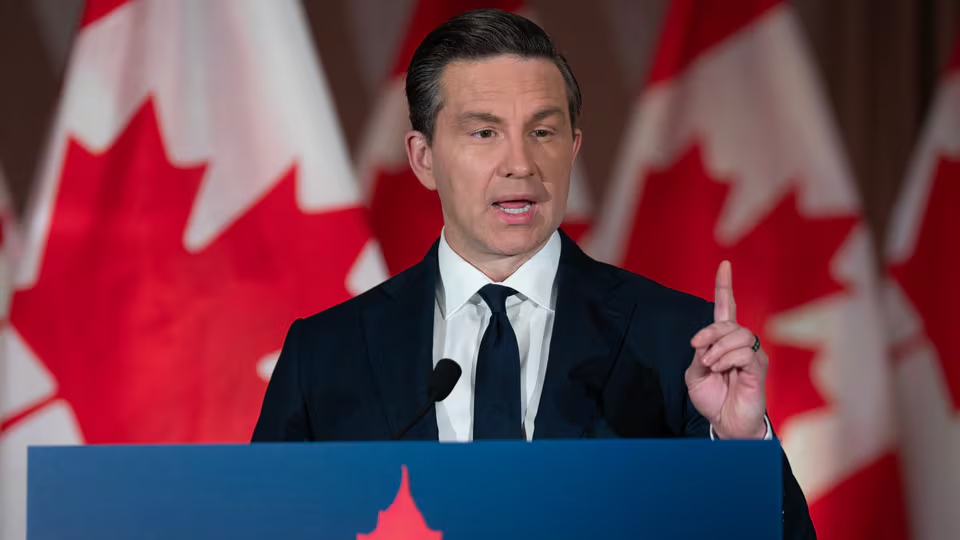Conservative leader Pierre Poilievre was met with cheers and applause as he took the stage in Camrose Tuesday evening for a highly anticipated debate in the Battle River–Crowfoot byelection — a riding considered one of the safest Tory seats in the country.
Hosted by the Camrose and District Chamber of Commerce, the debate featured 10 candidates out of more than 200 registered to run in the August 18 byelection. The unusually large ballot is a result of the Longest Ballot Committee, a protest group pushing for electoral reform by crowding ballots to highlight flaws in Canada’s first-past-the-post system.
The event was sold out, with supporters gathered both inside and outside the venue. Poilievre, who lost his Carleton seat in the April election, is running in the byelection after Damien Kurek — who previously won the seat with 82% of the vote — stepped down to allow the party leader a chance to re-enter the House of Commons.
“My mission here is to give national leadership to issues of local importance,” said Poilievre, defending his decision to run in a riding where he does not reside.
Sharp Exchanges and Local Sentiment
Candidates addressed questions submitted by the public on topics including health care privatization, the economy, immigration, and electoral reform. The debate was strictly moderated, with time limits enforced.
Critics challenged Poilievre’s outsider status. Independent candidate Bonnie Critchley drew loud applause when she argued:
“If you want to run for an area, you need to live here. I firmly believe Mr. Poilievre is too busy with his personal ambitions to give a rat’s backside about us.”
Critchley also pointed out that several candidates, including Poilievre, cannot vote in the byelection due to living outside the riding.
Liberal candidate Darcy Spady, a resident of Three Hills, introduced himself by saying:
“I don’t want to be prime minister,” a comment that drew laughter from the crowd — and even a smile from Poilievre.
Spady later added:
“I’d like to grow the culture so the next generation can say, ‘We can choose a Liberal, a Conservative, a moderate, or an NDP,’” reflecting on the region’s strong Conservative voting history.
Tsunami of Candidates and Electoral Reform Push
The Longest Ballot Committee, which fielded 85 candidates in Carleton in April and dozens more in past byelections, signed up over 200 candidates in Battle River–Crowfoot. To manage the logistical challenge, Elections Canada is using a write-in ballot, requiring voters to manually write the name of their chosen candidate.
Poilievre called the protest a “total scam” and promised legislation to prevent such actions in the future.
Policy Positions and Divisions on Immigration
On immigration, many candidates agreed that Canada should reduce intake levels in the short term.
“We must have more people leaving than coming over the next several years,” said Poilievre, citing pressures on housing and infrastructure.
By contrast, Green Party candidate Ashley MacDonald and NDP candidate Katherine Swampy praised immigration as one of Canada’s greatest strengths.
Independent candidates like Sarah Spanier emphasized the role of Independents in minority governments, suggesting they could hold the balance of power and prioritize local needs.
High Stakes, Low Surprises
Despite the large number of names on the ballot, few doubt the likely outcome.
“I think we all know this is Pierre’s riding to lose,” MacDonald admitted in her closing statement. “So please, take a chance.”
The August 18 byelection is shaping up to be not just a test of local support but a symbol of larger debates over electoral reform, regional representation, and national leadership.

